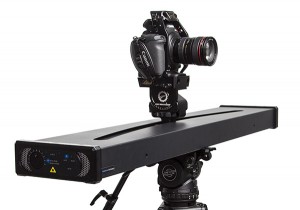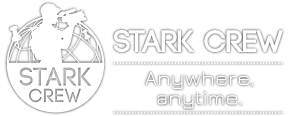 SLIDING CAMERA MOVEMENTS FOR DRAMATIC EFFECT DURING INTERVIEWS Need to spice up your video interviews? Here´s a very cool technique that can add dramatic effect: a sliding camera movement. Using a camera support mechanism known as a slider, the camera moves horizontally across the screen as the interviewee is speaking.
SLIDING CAMERA MOVEMENTS FOR DRAMATIC EFFECT DURING INTERVIEWS Need to spice up your video interviews? Here´s a very cool technique that can add dramatic effect: a sliding camera movement. Using a camera support mechanism known as a slider, the camera moves horizontally across the screen as the interviewee is speaking.
Imagine you are interviewing someone who is standing on on train station platform. This effect is sort of like shooting that interview via a video camera poking out of the window of a very, very slow-moving train. Why would you want this effect? Consider that camera movements that are flowing, flying, sliding, or moving in general, not only reveal new information, but they also make scenes more dramatic and cinematic.
To explain why, let´s dip into a bit of film theory. Basically, camera movements come down to two types: motivated and unmotivated. Motivated movements respond to action: we´re filming a speaker on stage – as the speaker walks back and forth across the stage, the camera follows the action. Wherever the speaker goes, the camera goes. We naturally expect this to happen as it mimics real life; e.g., the speaker walks across the stage and we turn our heads to follow. On the other hand, unmotivated camera movements ignore the action and put the power in the hands of the filmmaker or storyteller. For example, the speaker stands still but the camera does not, i.e., at the beginning of the shot the speaker is on the left of the screen, and by the end of the shot, the speaker is on the left of the screen.
Unmotivated movements can be logical or illogical. Logical unmotivated shots reveal new information, such as a sign that shows the name of the event that the speaker is speaking at. Illogical unmotivated movements bring attention to the camera movement itself, they engage the viewer with the “supernaturalness” of floating through the air and bring attention to the fact that the viewer is under the filmmaker´s control. Quiz time! What kind of movement are we doing if we are filming an interview in which the interviewee is sitting or standing still? Two answers.
- If the camera is revealing new information, for example, factory machines working in the background, works of art on the walls behind the speaker, or simply underlining the sheer size of the general space, then that is an UNMOTIVATED LOGICAL MOVEMENT
- If the camera is not revealing any new information and we´re sort of just fascinated by the movement itself, then that is an UNMOTIVATED ILLOGICAL MOVEMENT.
In our experience at Stark Crew, most interviews are done with medium and close-up shots in tight spaces, so there isn´t much room to reveal a lot of information in the background. When we use a sliding camera in these interviews, we are purposefully using unmotivated illogical movement as a sort of “eye candy” if you will. This “supernatural” movement tends to intrigue viewers and maintains interest. It keeps them engaged with the interview. This is very handy indeed if your interviewee is speaking about something that is not too exciting, or is stone-faced and stiff – you can spice up the interview by leveraging the cinematic effect of a sliding camera movement Essentially, you can make something that might have been a bit dull in context and spruced it up with an engaging camera movement.That said, if your interviewee speaks with expressive body language, strong emotions, and tells an engaging story – the emotional charge of the interview will be amplified by the sliding camera movement.
In the video below, you can see samples of the sliding camera movements being used for what is arguably both unmotivated logical movements (reveal new info) and unmotivated illogical movements (draw attention to the movement itself).
Can you tell which is which?!
